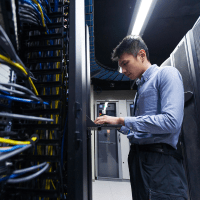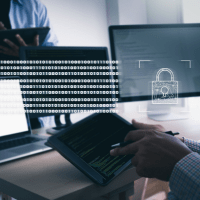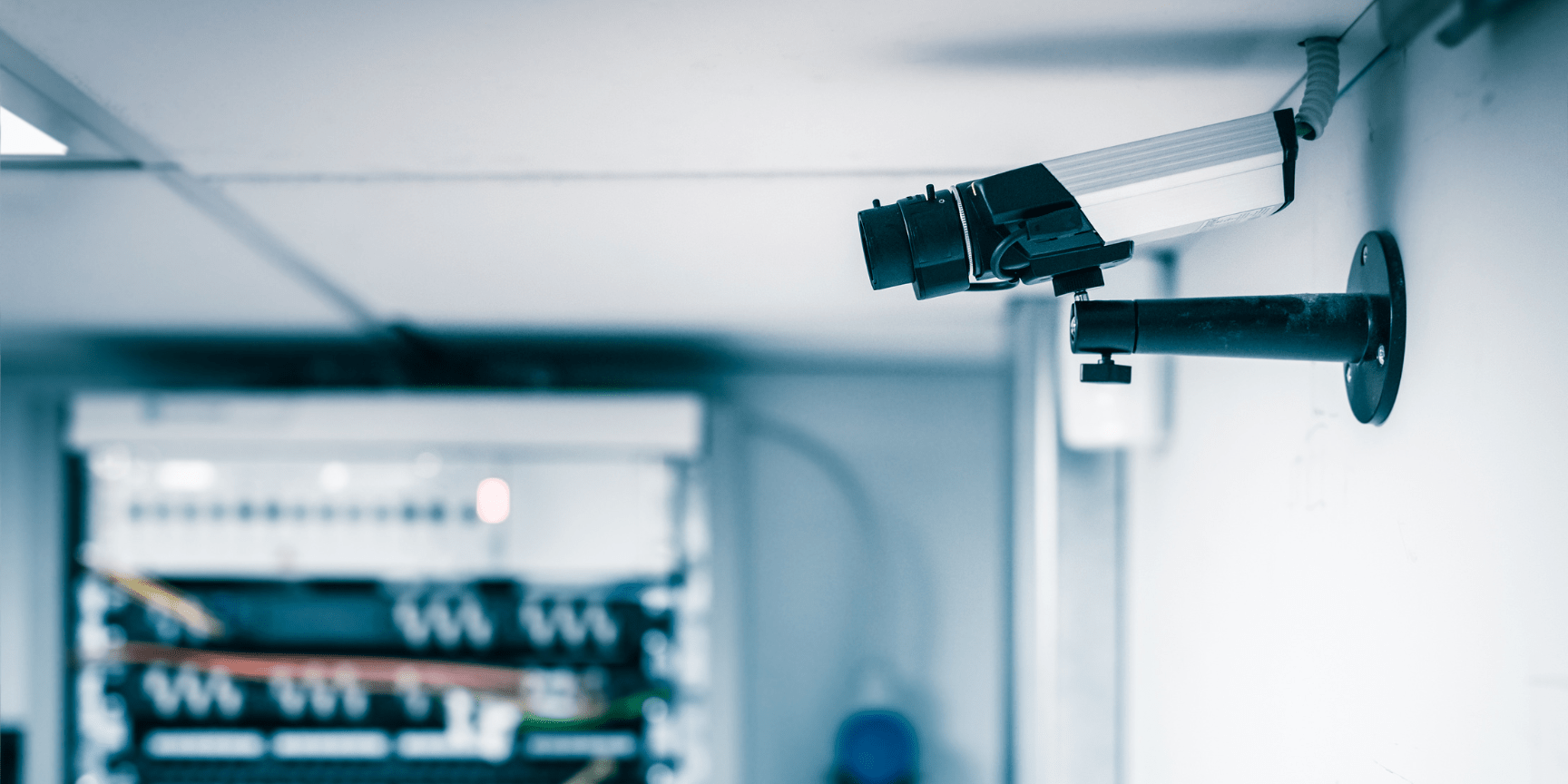Data centers provide more than just information storage. They provide protective measures to defend your information using protocols based on data center security best practices. These protocols are designed to give the maximum amount of security needed to protect their clients.
As cybersecurity threats become more complex and boundaries become blurred, traditional security strategies no longer offer the same protection they once did. To keep your data secure, data centers need new and innovative ways to provide protection.
Users, applications, and highly distributed networks can be secured in two main ways—physically and virtually. Physical security protects the data within the data center from natural disasters. Virtual security protects the data inside the facility from virtual threats. TenHats’ data center can provide you with peace of mind knowing that you’re getting cutting-edge security with top-of-the-line performance.
What are Data Center Security Best Practices in 2023?
There are a wide number of data center security best practices. However, these protections can usually be broken down into one of two categories—physical and virtual. They help keep your data secure regardless of which type of data center you choose.
- Physical security includes raised floors, weather-tolerant walls cameras, locked servers, keycard entry points, security guards, fire suppression systems, and backup power systems.
- Virtual security includes firewalls, encryption, traffic flow segmentation, and intrusion-prevention systems.
It’s essential to assess the security practices of a data center when evaluating providers. This will help ensure that you get the security and IT infrastructure that your organization needs.
Data Center Physical Security
It can be easy to forget that your data requires physical security. These threats come in many shapes and sizes, from natural disasters to would-be intruders. Data center security best practices anticipate and neutralize these threats before they become a problem.
When assessing a data center’s security, be sure to consider its:
- Location
- Physical access controls
- Building management security
Location plays an important role in a data center’s security. For instance, building a data center in an area prone to hurricanes isn’t ideal. This location would be at risk of more natural disasters, threatening the data and possibly the uptime of your business. Other important factors include architecture and design. Physical access to the data center should be limited to as few entry points as possible. The building should be nondescript with barriers to prevent forced entry.
Learn how location plays a role in data center resiliency!
 Physical access controls are another important aspect of data center security best practices. This in-depth strategy involves creating levels of separation, requiring different access controls at each entry point. In practice, a person may have to use an access card to gain entry and move deeper into the data center, followed by biometric scanners and intrusion detection systems. For added security, video surveillance should be installed throughout the facility.
Physical access controls are another important aspect of data center security best practices. This in-depth strategy involves creating levels of separation, requiring different access controls at each entry point. In practice, a person may have to use an access card to gain entry and move deeper into the data center, followed by biometric scanners and intrusion detection systems. For added security, video surveillance should be installed throughout the facility.
Like physical access controls, building management security is focused on people only accessing where they have authorization. This would include securing access for:
- Remote techs
- Facilities workers
- Systems and networks
On top of this, building security must be routinely checked for changes in the network. This includes monitoring for new or unrecognized devices that have been added to the network.
Data Center Virtual Security
 Data center security best practices wouldn’t be complete without digital security. These security standards are focused on fighting digital threats to your data by:
Data center security best practices wouldn’t be complete without digital security. These security standards are focused on fighting digital threats to your data by:
- Securing servers
- Utilizing AI to identify anomalies and combat cyber threats
- Improving software and hardware
Securing servers is the primary goal of data center security. To do this, security controls are implemented to prevent unauthorized activity. Access is also limited based on business needs. Security is reinforced with strong passwords and protocols such as HTTPS or SSH. Systems are also kept up to date with security patches.
A secure data center also requires implementing firewalls. This provides security on the network level, creating boundary points for the segmenting of a network into defined sections of internal east and west traffic between servers on the same network.
It’s the same for north-south traffic. Unlike east-west traffic, which only occurs inside the data network (microsegmentation), north-south traffic travels between the data center and an outside source, giving it a larger footprint (macrosegmentation). Communications are encrypted where necessary when traveling along this route.
Improving software and hardware helps prevent traffic from long load times. Data centers prevent this by using increasingly high network speeds. Paying attention to scale helps during times of increased seasonal traffic on e-commerce servers. Secondary systems give data centers the ability to upgrade without affecting their operations. All of these factors work together to help meet data center requirements for capacity.
TenHats: Your Data Security Partner
At TenHats, we understand the importance of securing your data. That’s why we follow strict data center security best practices in our 10,000-foot, purpose-built location.
This includes:
- 24/7 armed guards
- Full redundancy
- Around-the-clock support
- SOC II and HIPAA security
But security isn’t all we have to offer. By partnering with TenHats, you can also receive backup and disaster recovery on top of a fast and reliable network. Our data center is scalable, meaning that it can meet your needs no matter what.
Do you need a data center that’s the perfect combination of secure and functional? Contact us today to start a conversation!
Organizations use data centers to house large amounts of data. This data can be secured in two ways—physically and virtually. Physical protection includes secure access points and other protocols to protect the facility. Virtual security includes firewalls and other strategies to keep your data secure. TenHats provides advanced security to keep your data protected.
TenHats provides comprehensive enterprise-level IT solutions to organizations throughout the Southeast. Located in Knoxville, TN, our team of experts has IT experience in every major industry. There isn’t a problem that’s too unique or big for us to solve. Connect with our team to find out more about our managed services and data center today!
